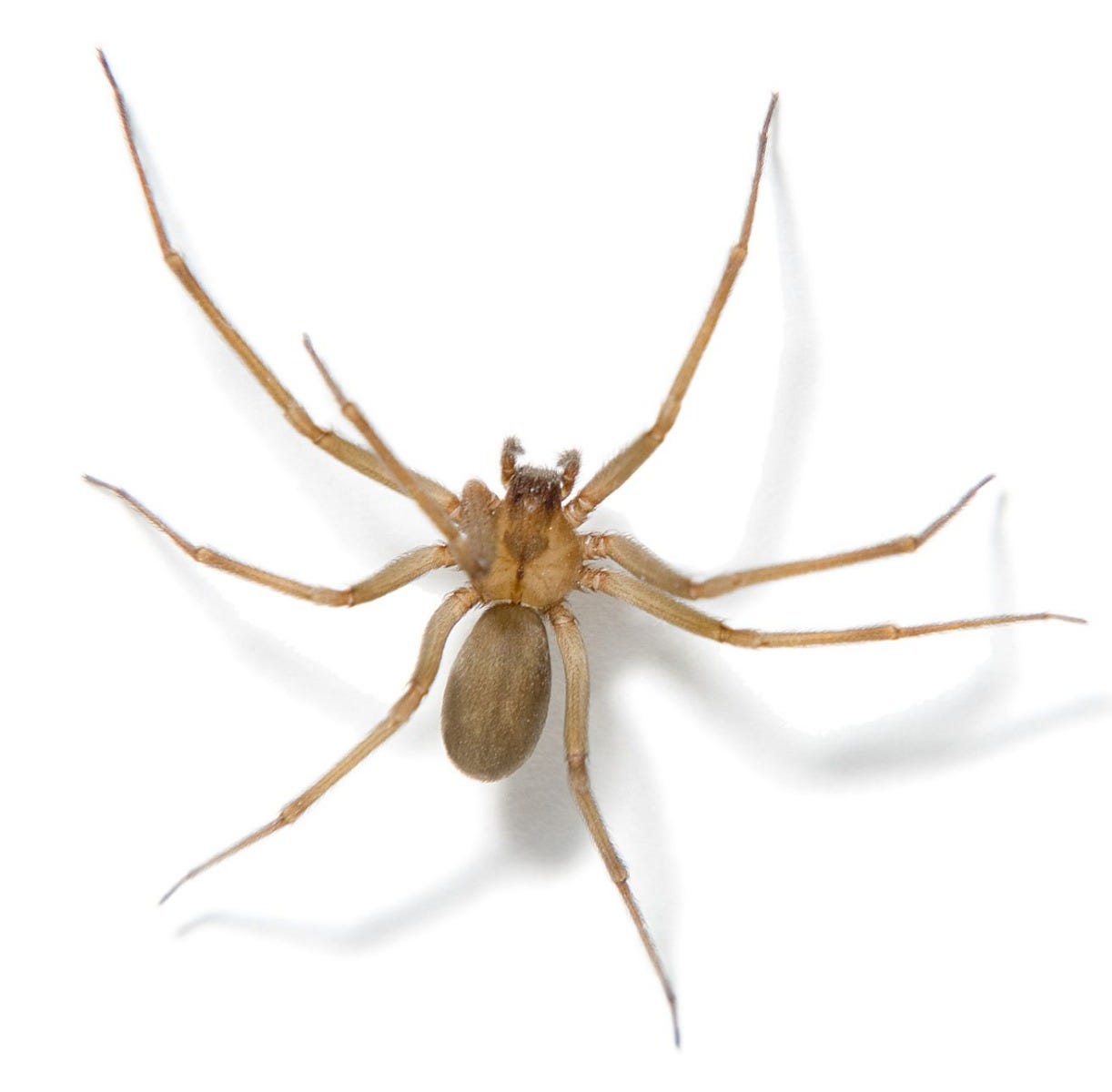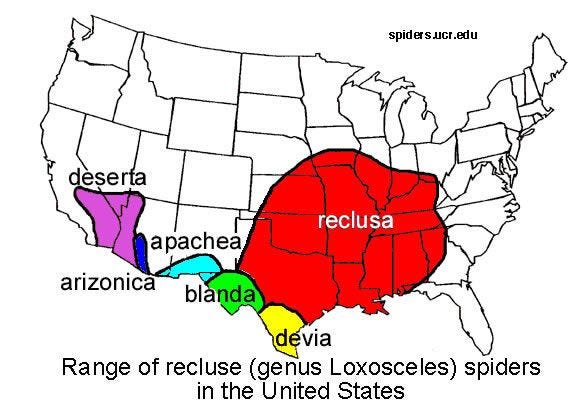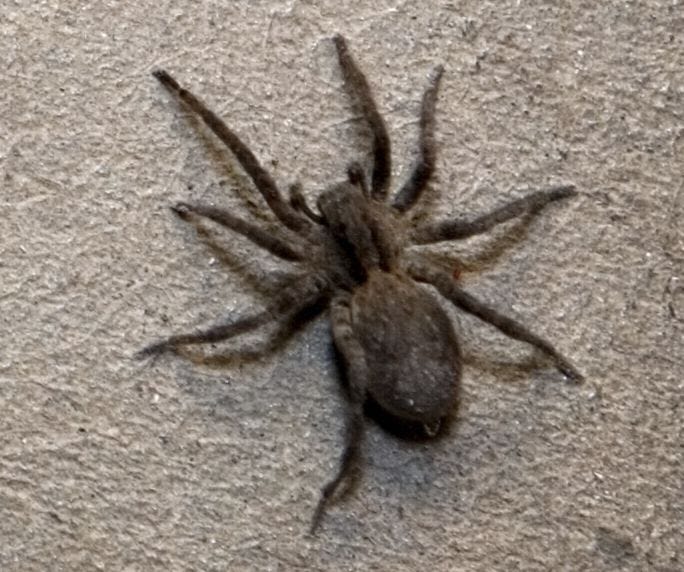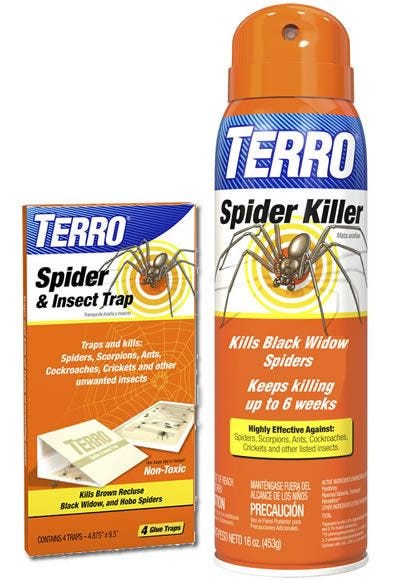
Common Spider Species: Brown Recluse
Brown recluse spiders have a bad reputation, which quite frankly, they don’t deserve. More untruths surround this spider than any other spider in the U.S. Excessive fear of this spider has been fueled by media hype, medical misdiagnosis and horror-filled stories by the general public. However, as their name implies, brown recluse spiders are actually reclusive and shy. This timid spider is innately wired to flee, not fight, though they will bite in defense if someone disturbs them.
Appearance
Brown recluses, also referred to as violin spiders, have a dark brown violin-shaped marking on the cephalothorax, which is the portion of the body to which the legs attach. However, to accurately identify a recluse, you need to look at the eye pattern, six eyes in pairs with a space separating the pairs.
The characteristics that best describe a brown recluse spider are:
- Six eyes arranged in pairs (most spiders have eight eyes)
- A dark violin-shape on the cephalothorax
- Uniformly light-colored legs (no bands or stripes)
- Uniformly colored abdomen, which varies from dark brown to a light cream color, depending on what it has eaten
- Fine hairs on the legs (no spines)
- Make small webs behind objects, never out in the open
- Body length of about 3/8 inch. If a spider has a body length of greater than a 1/2 inch, it is not a recluse.
Habitat
Brown recluse spiders like to hide in dark, dry, undisturbed areas. Indoors, they seek shelter in basements, cardboard boxes, storage closets, laundry left on the floor and shoes. Outdoors, they can be found in wood piles, garages and sheds.
Geography

The range of the brown recluse spider is limited to the colored areas on this map. If you live outside a colored area, brown recluse spiders do not live in your state. End of story.

Diet
Brown recluse spiders feed on soft-bodied insects such as crickets, cockroaches, moths and flies. Cannibalistic, this species is known to eat one other. Unlike some spider species that use their webs to ensnare their prey, brown recluse spiders are nocturnal hunters. They chase down their victims. Once caught, they use their fangs to inject deadly venom into their prey to subdue them. Like most spiders, the brown recluse can survive months without food or water.
Threat
Despite the media hype and public hysteria surrounding brown recluse spiders, their bites are not life threatening. These withdrawn and timid spiders prefer to spend daylight hours in retreat. Still, when provoked, a recluse will bite. They use their short fangs to inject a cytotoxic venom into victims, which will cause a welt and a noticeable sore. The wound can be slow to heal and could require medical attention if a secondary infection occurs.
However, according to Dr. Phillip Anderson, a Missouri physician and well-recognized authority on brown recluse bites, there has never been a confirmed death as a result of a brown recluse spider bite in North America. In fact, the doctor and other brown recluse experts have noted that almost all recluse spider bites heal in two to three months without any medical treatment.
No medications are required to treat brown recluse spider bites. The recommended treatment for most bites is basic first aid using RICE therapy – Rest, Ice, Compression, Elevation.
Control Options

Just the thought of brown recluse spiders lurking in your home is unsettling to most, but you can ease your worries with TERRO® Spider & Insect Traps. The non-toxic traps are an excellent and easy way to capture and kill large numbers of spiders and other unsavory insects. The traps can be folded to prevent children and pets from coming into contact with the sticky surface, or they may be used in a flat configuration.
TERRO® Spider Killer Spray is an easy-to-use contact killer that is highly effective against brown recluse spiders and other arachnids. The active ingredients combine to kill spiders instantly and create a long-lasting barrier to keep killing for weeks.
Bibliography
http://insects.about.com/od/spiders/tp/brown-recluse-lies.htm
